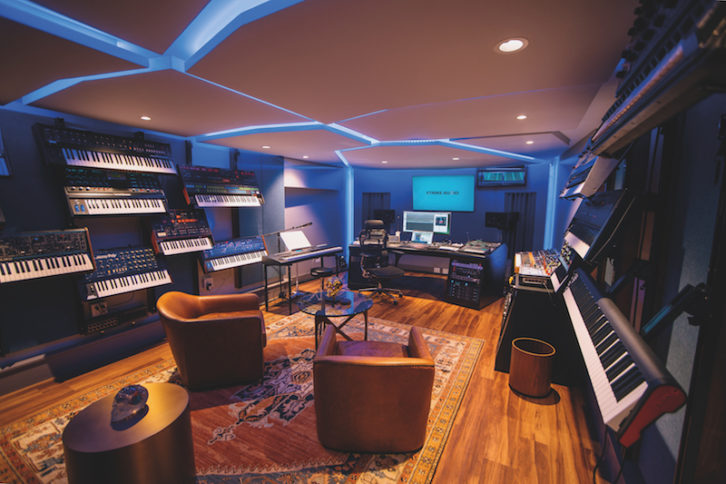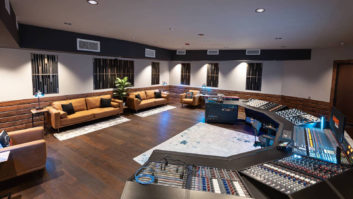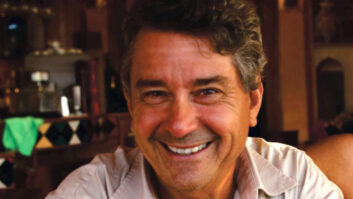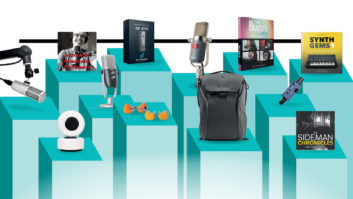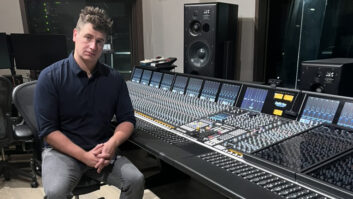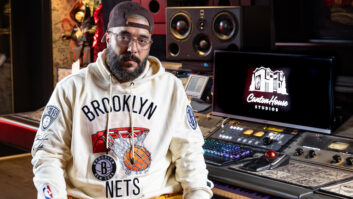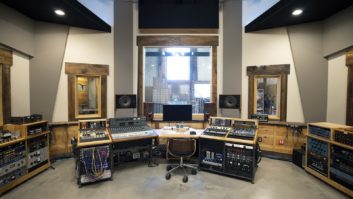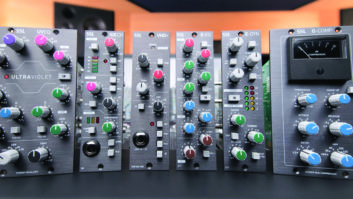Mix magazine’s annual design feature includes 22 wonderful studio projects from an impressive roster of designers and acousticians. While pandemic-related closures delayed the completion of a few projects, studio construction actually boomed during the past year, whether in home environments or commercial spaces.
This year’s “Class” is also notable because it includes posthumous projects from two designers that we lost recently. Geodesic Sound was started by Mark Genfan before he passed away in 2018, and was later completed by Jeff Hedback of HDAcoustics, the designer of our cover studio. We’ve also included two projects by Francis Manzella, whose firm FM Design carries on, having recently completed studios that Manzella designed before his passing in 2020. It’s an honor for Mix to showcase all of these creative spaces.
Round Table Recording Company, Indianapolis, Ind.
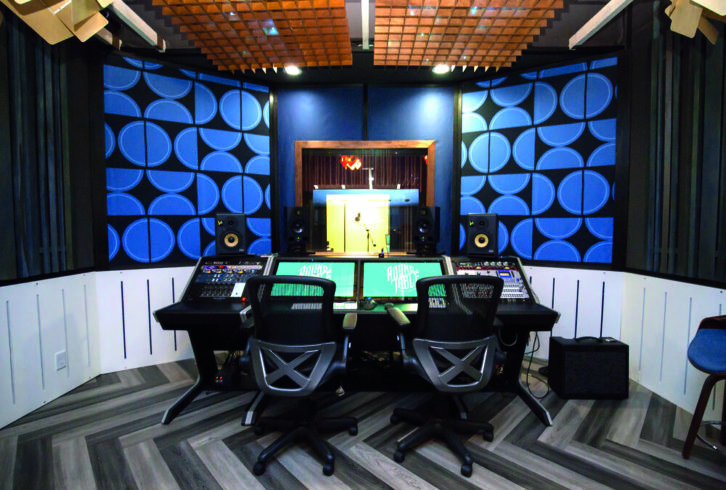
PHOTO: B.J. Jensen
More than a studio facility, Round Table Recording Company is a multifaceted business that encompasses music recording and mixing, production, artist representation, and audio education. Partners Tim Walker and Travis Moore, and chief engineer Corey Miller, developed the model with the idea of supporting Indianapolis’ homegrown talent on both sides of the glass.
“We went through several building sites before we found the right one,” recalls Jeff Hedback, whose firm HDAcoustics designed the studios. “One day they called about this building in the Broad Ripple section of Indianapolis, which is an arts district with clubs and other creative businesses. The building was interesting because half of it was built in the ’50s with a barrel vault ceiling, and the other half was added about nine years ago. We did a full demo of the new portion and worked from the existing walls in the original part of the building to create the studios and classrooms.
Engineer Miller, meanwhile, reached out to local engineers and producers for feedback. “Most people are doing projects at home, so I wanted to know what would warrant them or their clients paying an hourly rate for a bigger facility. It came up again and again that they wanted at least one of the studios to have a large-format console with multiple channels and built-in preamps. Then some people said they wanted a more sleek, modern setup.”
Miller’s informal survey helped the partners settle on an Audient Heritage Edition Console and Ocean Way HR 3.5 main monitors in Studio A, to go with the B room’s Slate Raven system. The studio’s Yamaha C7 was also a common request—a piece of equipment that often does not fit into a home recordist’s space or budget.
Equipment choices in turn helped Hedback arrive at a layout that would fit all of the puzzle pieces together cleanly. “That’s how I ended up with the side address—the main control room with the front that looks into a vocal overdub space,” Hedback explains. “I did a lot of acoustical modeling and low-frequency sound pressure mapping for the response of the room’s irregular shape and where the drivers are. That led to designing multiple custom-tuned Helmholtz absorbers across the rear. They wanted a lot of glass to view the live room, so I angled that window strategically.”
The space comprises three studios, plus a conference room, lounge and student studio within the 5,000-square-foot building. The 1,200-square-foot Studio A features the Audient console and Ocean Way mains fitted into a multilayered absorption system, custom-tuned low-frequency control devices and custom acoustical scattering panels. The elongated live room connects to the piano/writing room, which can function as a booth or be run independently.
Studio B offers dual Slate Raven digital control surfaces and ADAM A7X near-fields. Designed for music production, Studio C is loaded with virtual instruments and effects. The student studio is outfitted with a full rig that features the Slate Raven MTZ and an ID44 Audient interface.
Moore, Walker and Miller call their business Round Table Recording Company to emphasize the idea of collaboration. “Everybody has a seat at the round table,” Moore says. “Everyone revolves around the hub, the center. And everybody comes here to be in this creative space.”
The spirit of creativity, and the mid-century style of the original part of the building, also inspired the colorful finishes that ornament the studios acoustical panels, walls and flooring. Diamond shapes, stripes, and abstract florals were all chosen by Moore. He also scoured the Internet for unique furniture pieces that suit the décor.
“At one point, Jeff sent over renderings to us,” Walker recalls. “He said, ‘We’re at a point where we’ve got to start fleshing this stuff out. What’s everything going to look like?’ So Travis started adding colors and paints and fabrics. He sent over revised renderings, and my jaw just fell! I had chills. All this time, we’d been saying that it’s got to be a place where artists and engineers feel equally creative, and all their inhibitions are gone—where they can be vulnerable, where they can enjoy the space and have fun. I saw those renderings, and I thought, ‘I understand the vision.’ It made us want to keep building on those ideas even more.”
The Cowboy Arms Hotel and Recording Spa, Nashville
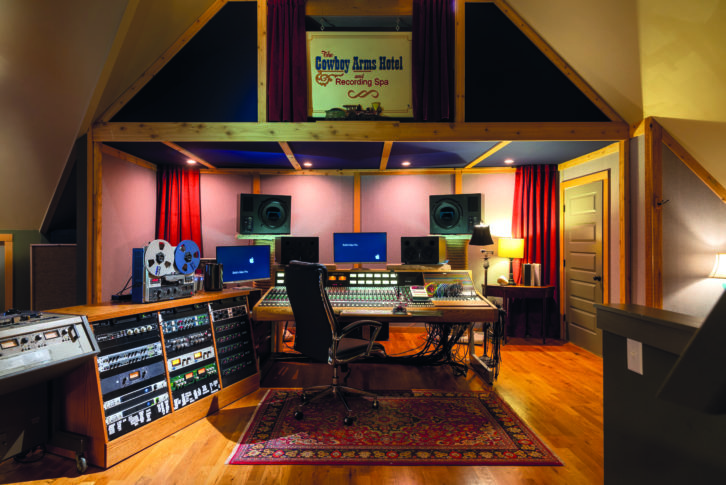
Considered Nashville’s first home studio, this facility dates back to the mid-1970s when engineer/producer Cowboy Jack Clement was working with artists such as Johnny Cash, Charley Pride, Townes Van Zandt, and many others. In 2011, a fire broke out in the house, burning down the legendary engineer/producer’s clubhouse for singer/songwriters. The following year, Mark Howard redesigned and rebuilt the studio, enlarging the cutting room, and then in 2018 Cousin Bob Clement purchased the studio. Engineer Cameron Davidson and studio designer Steven Durr helped bring the studio back to its original glory, upgrading the acoustics while retaining its classic gear and homey vibe. Selected equipment includes a Trident 80B console, MCI 2-inch 24-track tape machine, Lawson plate reverb, and UREI 811 main monitors.
Sony Music Studios/5020 Studios, Miami, FL
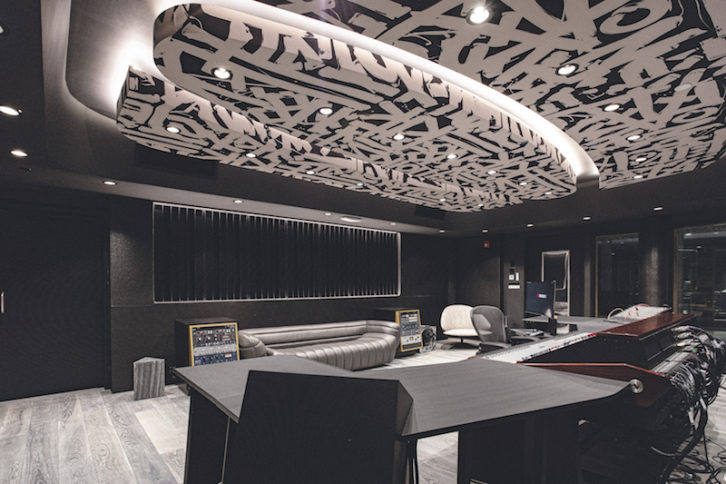
Horacio Malvicino and Fabiola Mena of the Malvicino Design Group provided the acoustical design, installation and integration for this 15,000-square-foot, two-story facility: the new creative hub for Sony Music Latin in Miami. The project encompasses three studios, two writing rooms, the first 360RA mixing studio in Miami, a 4k screening room, and a performance area, as well as lounges, a conference room, and multipurpose offices for podcasting and other content creation. All of the rooms are connected via a primary and secondary Dante network. The studios’ extensive equipment list includes a 32-channel AMS Neve BCM10 MkII console, Ocean Way HR2 and HR3.5 monitors, a 64-channel Waves LV1 system, and outboard gear from Shure, Waves, KRK, IK Multimedia and Focusrite.
The Record Co., Boston, Mass.
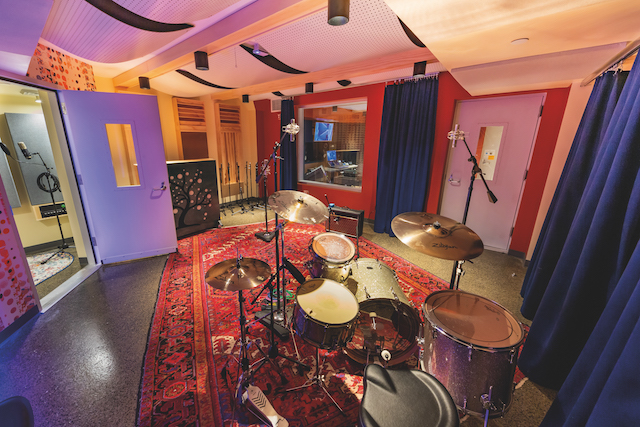
This 12,500 square foot complex is a 501(c)3 nonprofit, community-focused workspace housing four studios and 15 rehearsal spaces. The complex was designed by architects Silverman Trykowski Associates and acoustician Lou Clark of Sonic-Space, and built by City Wide Contracting. Spaces offer a range of acoustic signatures, from Studio A, which has an 850-square-foot live room with 12-foot ceilings, to 95-square-foot dead booths in Studios C and D. Isolation between studios exceeds STC75; this is accomplished with concrete block walls, 25 floating concrete floor slabs, and multiple layers of drywall. A combination of custom acoustic treatments from Soundwall Construction and prefabricated acoustic treatments from Acoustimac were installed in all rooms.
Control rooms feature 2-foot-deep front absorption walls with speakers mounted on concrete blocks. All four studios feature audio design and integration by Audire Design and are equipped with Avid S1 control surfaces, Focusrite Red16 and A16R interfaces, and Grace m905 monitor controllers with Symetrix DSP. Monitoring includes Focal Trio 6be, Avantone CLA10 and MixCube, Hearback and Redco Cue systems. The entire facility is connected via Dante. Completed in January 2021, The Record Co. has already hosted 700-plus recording and rehearsal sessions.
June Audio, Provo, Utah
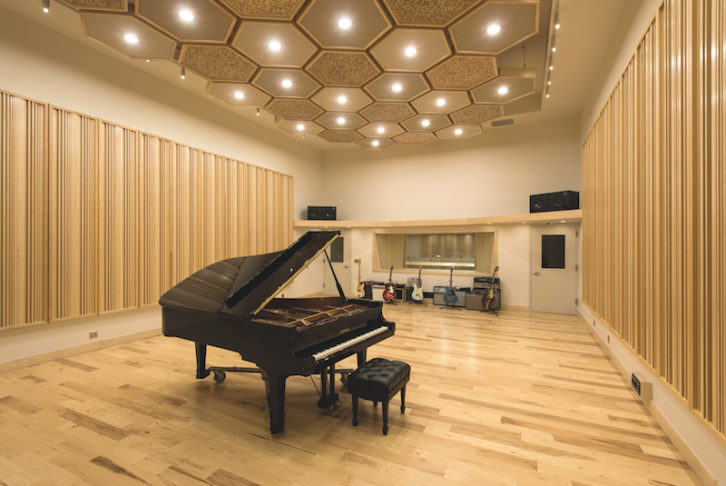
This multiroom studio facility was designed from the ground up by Wes Lachot Design Group to serve top music clients, such as John Legend, The Killers, Warner Brothers TV, Blizzard Entertainment and Disney. Studios 1 and 2 feature Reflection Free Zone design and Brett Acoustics Slatffusors. The large Studio 1 tracking room has adjustable acoustics for variable decay times. Tracking room clouds are absorptive at low frequencies and diffusive at mid and high frequencies, creating a nice ambience for drums and acoustic instruments. Acoustical installation was performed by Brett Acoustics. June Audio’s equipment includes an API 2448 32-channel console in Studio 1, a Daking 32-channel board in Studio 2, ATC main monitors and a Pro Tools rig with Burl Mothership converters.
FAMA Studios, Santo Domingo, Dominican Republic
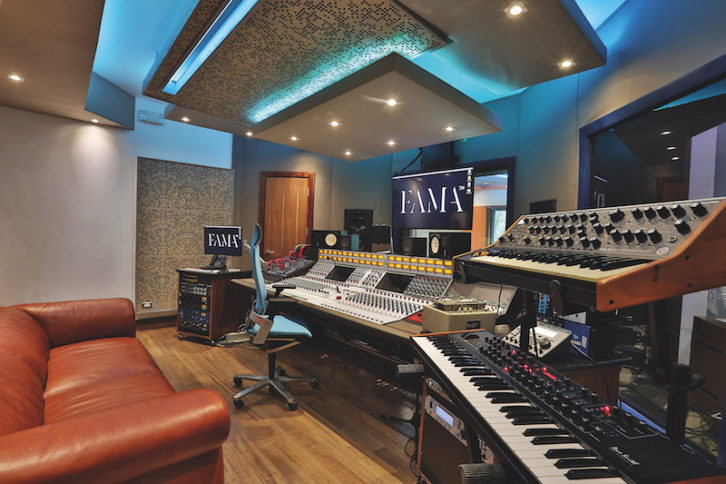
Designed by WSDG’s Sergio Molho, FAMA Studios is built into the expansive three-story luxury home in Santo Domingo’s historic Colonial District. WSDG also provided systems integration for all of the rooms. Studio A, on the first floor features spacious control and live rooms, an iso booth, sound lock and an outdoor patio for client breaks. The A room is equipped with a 32-channel Rupert Neve Designs Portico 5088 console and ADAM SD3 stereo monitoring. The second floor is home to control rooms B and C, a shared live room, iso booth and machine room. Control B offers an SSL Duality 48 console along with ADAM and Focal speakers, while the C room is an Avid Pro Tools-based project studio with Neumann speakers. The third floor features an apartment-like living room/kitchen/dining room, client lounge with a panoramic view, an expansive terrace, and a shallow ornamental pool.
Strange Cranium/Strike Audio Satellite Studio, Madison, Conn.
PHOTO: Mark LoperThis Francis Manzella-designed studio is a private work environment that opened in February 2021. Wiring consultation was provided by Matt Marinelli of Coral Sound, while fabric and cloud installation was by Kenneth Capton at Solar 2 Studios. The studio is a companion to Billy Jay Stein’s larger commercial studio, located in the Flatiron district of Manhattan. An 800-square-foot basement space was converted into a state-of-the-art home recording and mixing environment for Stein’s work on TV projects, albums and soundtracks. Besides a selection of Stein’s vintage and modern keyboards, audio equipment includes Pro Tools HD, Logic Pro, Ableton Live, Bitwig, and Strange Cranium MainBrain Show Control software. The studio also incorporates a hybrid analog/digital system with Dangerous and Neve summing, and monitoring with ATC mains and Griffin subwoofers
The Scoring Lab/Mix Lab, Santa Monica, Calif.
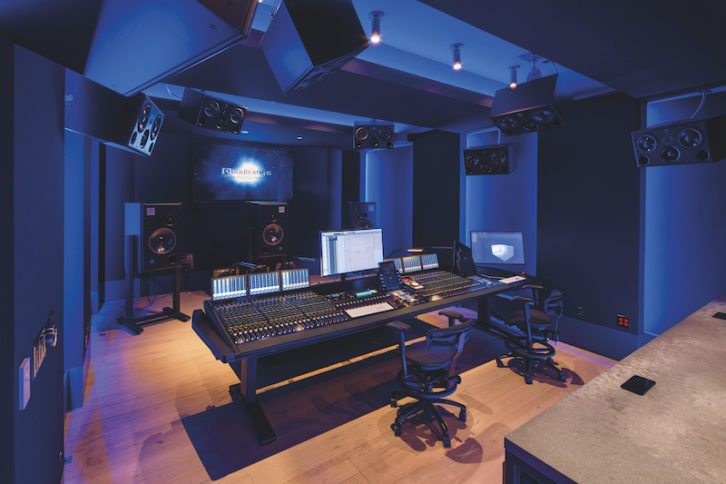
Benjamin Wallfisch’s new two-room facility has allowed the composer to take control of his creative process, from initial composition to the mix. Designed by Peter Grueneisen of nonzero\architecture, the studio includes a writing room; the Dolby Atmos-certified Mix Lab; and an ADR/overdub booth that is accessible from both rooms. In his design, Grueneisen took advantage of the existing building’s classic bow-truss warehouse space, which was built out to combine an industrial feel with a more refined European style. Essential studio gear includes an Avid S6 64-fader dual-operator console; an extensive Avid Pro Tools setup that includes three HDX3 systems, and multiple MTRX units with AES, Dante, MADI, Digilink and Pristine cards; and The Mix Lab’s ATC monitors in a Dolby Atmos configuration.
Magnolia Hill Studio, Nashville
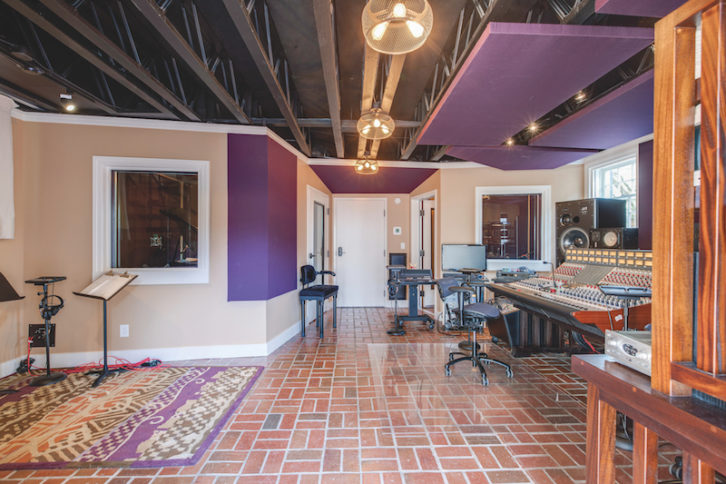
Steven Durr Designs LLC provided the design of Ronnie Millsap’s personal studio, Magnolia Hill, which has been installed in an existing pool house on the artist’s property. SDD worked closely with his client to create a studio with uncompromised acoustics and audio quality in this unique workspace. Equipment includes a Neve 5088 Shelford 24-channel console, RADAR II recording system, ATC 150 main monitors, Bag End dual-12 ELF subwoofer, Lexicon 224 and Bricasti M7 reverbs, LA2A limiter, EL8 Distressors, and a selection of microphones.
Brett Ensley Studios , Greer, S.C.
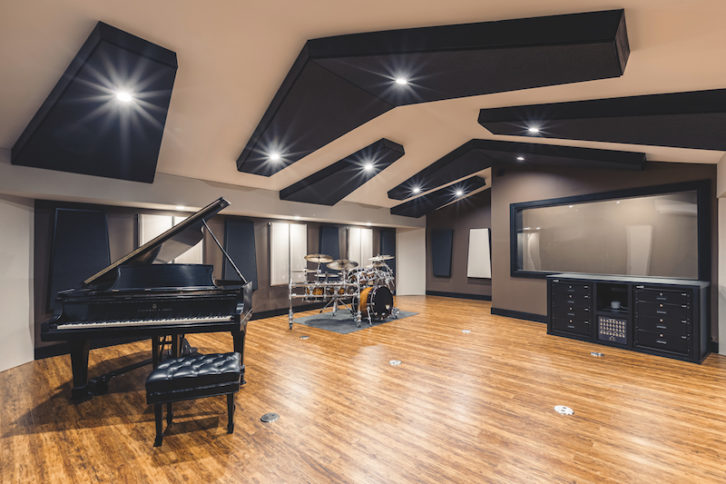
Studio owner Brett Ensley worked with Gavin Haverstick of Haverstick Designs to design his Mix Room back in 2016, and again recently to add this 700-square-foot live room in a converted, detached garage. The studio, which came online in March 2021, is in a residential area, so isolation was important. Conduits were run from the house where the Mix Room is located. The interior acoustical design incorporated a combination of custom and stock treatments. Custom soffit bass traps, vertical corner traps, ceiling clouds and wall panels were constructed on-site. The Flex-48 Adaptive Treatment System from Acoustical Fulfillment allows engineers to make the room more dead or live to suit their projects. Studio equipment includes the Orion 32HD Antelope interface, Dangerous D-Box, Neve 10-space 500 Series rack, and a 1969 7-foot Steinway grand piano.
T-One Studios, Inner Mongolia, China
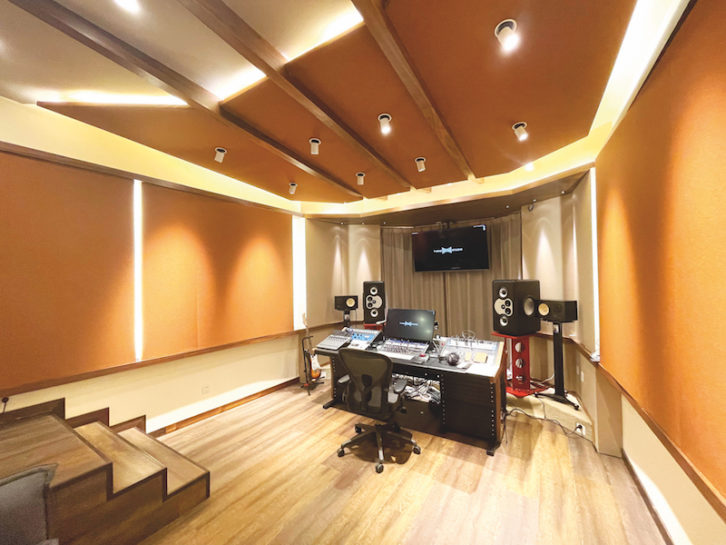
T-One Studios was designed by Sergio and Silvia Molho of WSDG and is set within a 2,150-square-foot duplex space in an elegant residential building. The ground-floor 237-square-foot control room is linked to a basement-level iso and live room built with full room-within-a-room construction. The studio is used to record a wide range of musical styles, from traditional Mongolian, folk and classical music to pop, rock, jazz and R&B. The brainchild of successful Chinese recording engineer Qiwu Tan and his producer/business partner Yi He, this facility was completed in less than a year despite pandemic restrictions. Featured equipment includes an Avid S1 control surface, Rupert Neve Shelford Channel and 5024, Barefoot MM12 main monitors, and a range of new and vintage preamps and microphones.
Geodesic Sound, Houston, Texas
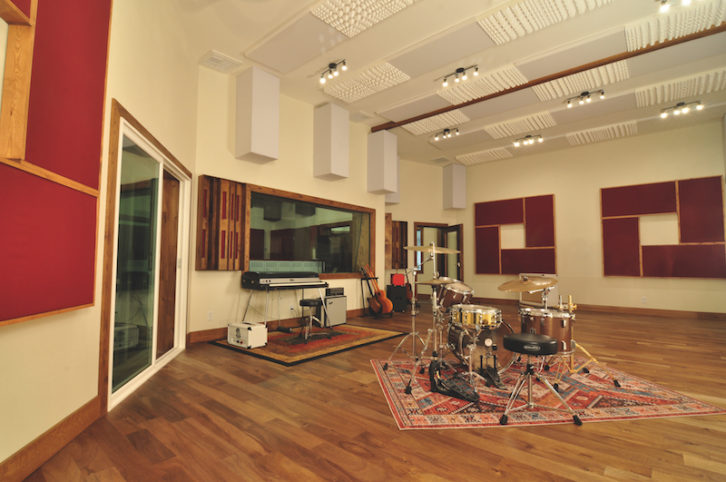
Mark Genfan designed the layout of this 1,200-square-foot studio in April of 2018. Following Genfan’s passing in December of that year, owner Alvaro Rodriguez contacted Jeff Hedback to complete the project; Hedback retained that layout and completed the acoustics, lighting, mechanicals and other elements to accomplish the client’s goals. Geodesic Sound features a 300-square-foot control room, a large live room, and a booth on each side of the control room. Built by The Pillar Group, the finished studio includes a combination of commercial and custom-built treatments. Major equipment includes an Interphase Audio custom 16-channel Ark console, Focal Shape Twin monitors, Antelope Orion 32 interface, and Steamboat Classic 50 and Classic 18 Amps.
Barton Building Studio, Hamilton, Ontario
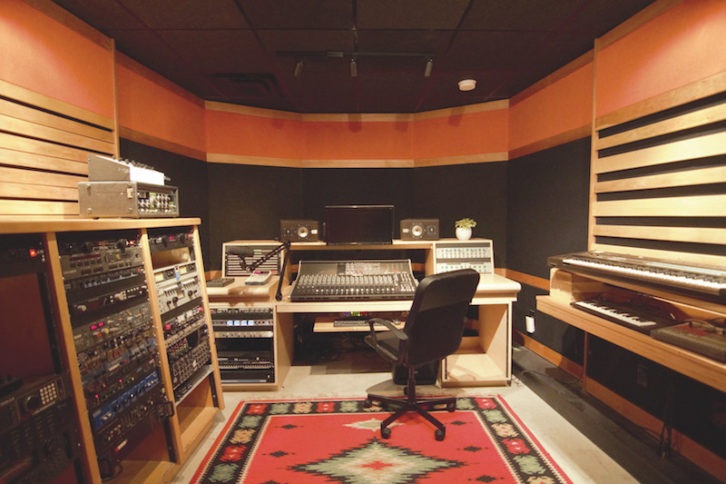
Lou Clark of Sonic-Space designed this studio suite comprising a control room, live room and full client lounge. The control room design has a concrete floating floor with box-in-a-box isolation from an art gallery below, as well as custom diffusors and more than two feet of absorption on the front and rear walls. Speakers are mounted on concrete blocks, and side walls have custom wood slat construction. The live room was built with double walls and soundproof doors and glass to isolate the studio from the street; poly-cylindrical diffusors were also incorporated. The studio features an SSL XL console, monitoring from Neumann, Spiral Groove, Genelec and Auratone, as well as dozens of synthesizers and keyboards.
Adrian Biddle Theatre/Pinewood Post Production, Shepperton, Surrey, UK
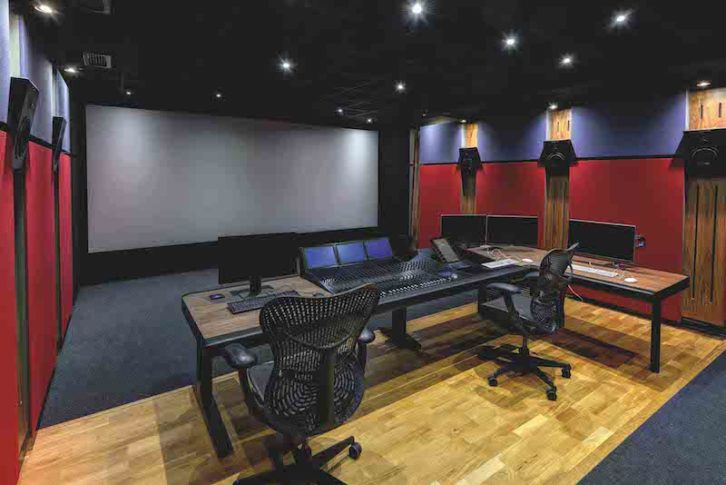
Munro Acoustics redesigned the former Preview Theatre, which was renamed in 2015 in memory of director of photography Adrian Biddle, BSC. The latest incarnation opened in January 2021, and features a fully floated room design. The theater is capable of accommodating 7.1 surround as well as 5.1 Theatrical P-Mix, final mixing and mastering, near-field mixing for film and television, and ADR recording. The room is designed to be upgradable to Dolby ATMOS in the future. Featured equipment includes a single-operator, 24-fader Avid S6 M40 control surface, Pro Tools HDX system, Dynaudio MDF/M15M surround monitoring, JBL 4645C LFE speakers, and Crown amps.
PHOTO: Courtesy of Munro Acoustics
Anjuna Recording Studio, Portland, OR
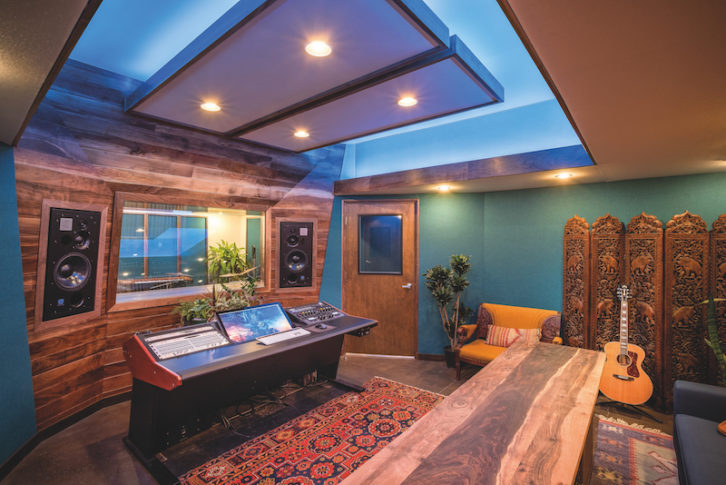
Hand-built by owner Slater Swan in his backyard, detached garage, Anjuna’s control room is a true Reflection Free Zone design, employing RPG Modffractal diffusors and a custom rear-wall bass-trapping system. The live room offers lots of vintage instruments, natural light and a great vibe. Architect Barbara Richter worked with studio designer/acoustician Wes Lachot on this project, while Tony Brett of Brett Acoustics provided consultation on the build-out. Anjuna is outfitted with a Dangerous Music D-Box console; AMS Neve, API, Avalon and Daking mic pre’s; ATC SCM100 ASLR main monitors with ATC discrete power amps and crossovers; Pro Tools 12 and Ableton Live recording/mixing platforms; and much more.
Precision Sound, New York City
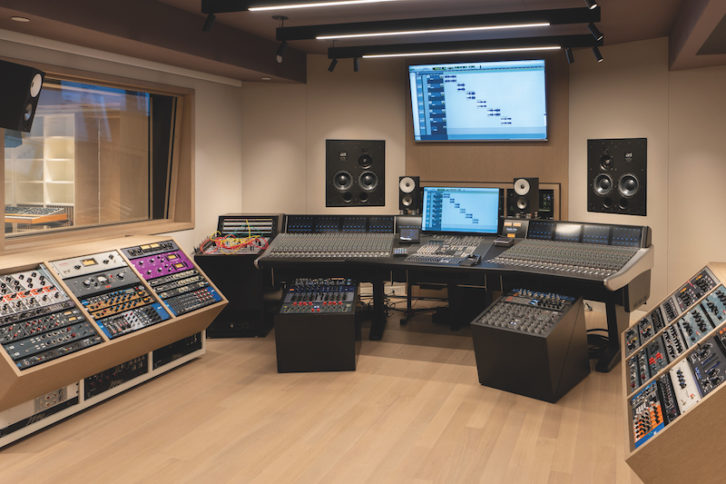
Precision Sound is situated in the heart of New York City’s Upper West Side neighborhood. The studio offers a spacious control room, live room with separate isolation booth, and a lounge. A 48-channel SSL Duality console is the centerpiece of the control room, along with ATC SCM110 main monitors, and outboard equipment from Rupert Neve Designs, Manley, Maselec, Retro, UA, Chandler, Bricasti, Eventide, and more. The design team developed Precision Sound under the direction of the studio’s founder and chief engineer, Alex Sterling. Acoustics, the decoupling system and patchbays were all designed by Horacio Malvicino and Fabiola Mena of Malvicino Design Group. Architecture and interior design were by Steve Marchetti and Angelo Caranese of Studio Marchetti. Technical systems design and installation were by Crossley Acoustics led by Matthew Schaefer.
Genelec Immersive Experience Center, Natick, Mass.
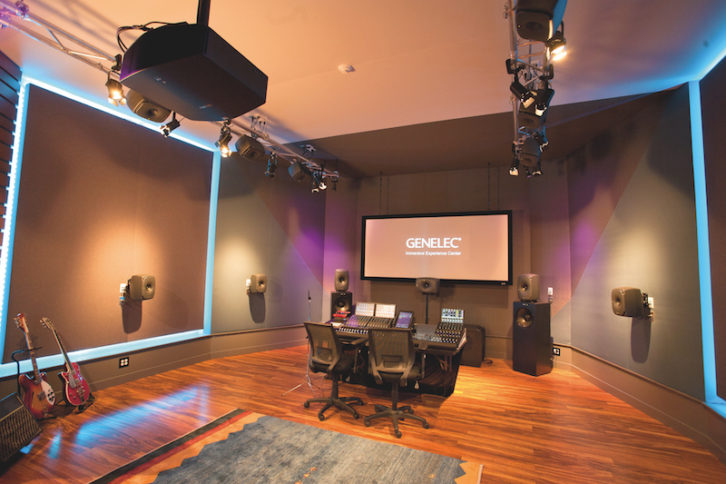
Active loudspeaker manufacturer Genelec’s Immersive Experience Center is a total rebuild of a former surround sound demo studio that was designed in-house in 2004. Francis Manzella of FM Design created a new aesthetic and acoustical treatments for the renovated space, which serves as a mix room, theater, and research and test center for new software and other Genelec products. The studio also facilitates the creation of webinars and other marketing content. In addition to a full range of Genelec Smart Active Monitoring products (three 8351Bs installed for L-C-R; four 8341As at left and right side and rear channels; six more 8341As overhead for front, mid and rear height channels; a 7370 and 7380 subwoofers; two W371A Smart Active Woofer Systems left and right) the facility includes an Avid S6 with Pro Tools routed through a Dante network.
Sonic Conscious, Denver, Colo.
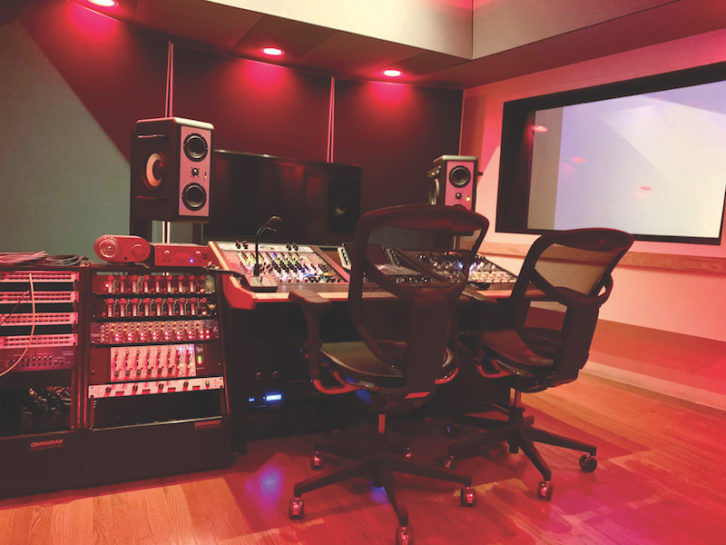
Sam Berkow of SIA Acoustics designed this studio for client Jason Wagner, who says his goal was to have the capabilities to record full bands live with “lots of beautiful mic bleed,” overdub using a variety of approaches, and mix in a control room that is “a joy to work in with incredible and accurate monitoring.” The 480-square-foot live room has sloping ceilings (17 to 15 feet) and no parallel walls, while the 220-square-foot control room has an asymmetrical design (for low-frequency control) with the ceiling sloping from 10 in the front to 12 feet in the back. Also included are a 50-square-foot vestibule and 300-square-foot lounge/hallway. Sonic Conscious is equipped with Pro Tools HDX, Barefoot MM27 monitors, Apogee Symphony conversion, and 40 channels of class A preamps from Phoenix Audio, Focusrite, Rupert Neve Designs, Shadow Hills, Blue and Avalon.
High Level Entertainment, South River, N.J.
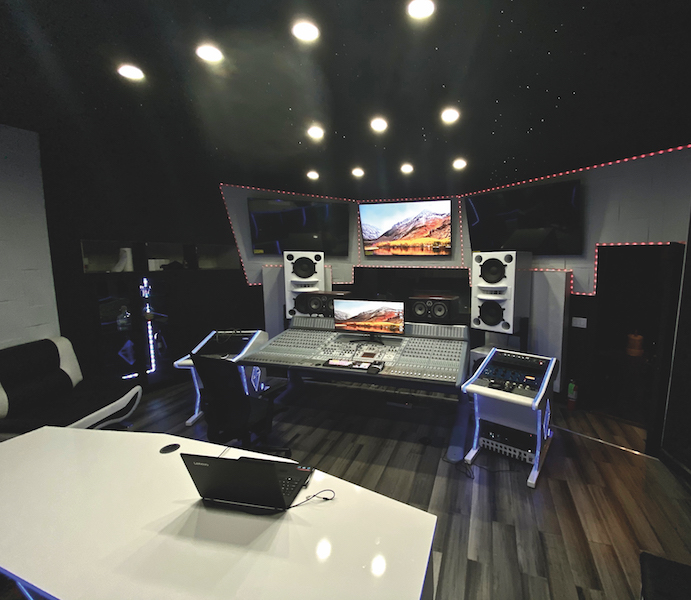
Dave Malekpour worked with lead architect Michael Bashkhangy of Malekpour Design Partners on this production/mixing facility, which went online in February 2020. The studio is equipped with an Avid Pro Tools HDX Ultimate rig and ICON control surface, Augspurger Duo 12V-SUB 18 monitoring system, AMS Neve DPX1073 mic pre/EQ, Tube-Tech CL-1B, and Apogee Symphony MkII interface. A custom MDG Starlight ceiling and embedded LED lighting complement the custom fixtures, which were designed and produced through a collaboration between MDP and Zaor Studio Furniture.
Satellite J, Siracusa, Sicily, Italy
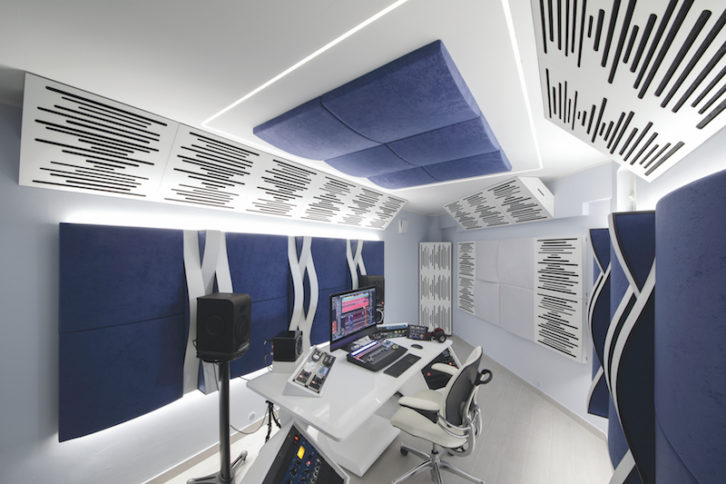
This private studio was designed by Gavin Haverstick of Haverstick Designs for producer/engineer Jeffrey Jey, frontman for Eiffel 65. Acoustical treatments include a variety of products from Vicoustics—such as the Cinema Round Premium, VicPattern Ultra Wavewood and Super Bass Extreme Ultra—giving the room a futuristic appearance. The treatments are spaced away from the wall with wood blocking and back-filled with insulation to improve low-frequency response and provide space for LED lighting. Jey is a Studio DMI engineer, and the studio is an official Studio DMI satellite studio that is outfitted for mixing and mastering with an iMac Pro, Focal Shape 65 monitors, RME Fireface UFX+, Neve 1073N preamp, Neumann mics, Mogami cabling and more.
Beagle Studios, Carpinteria, Calif.
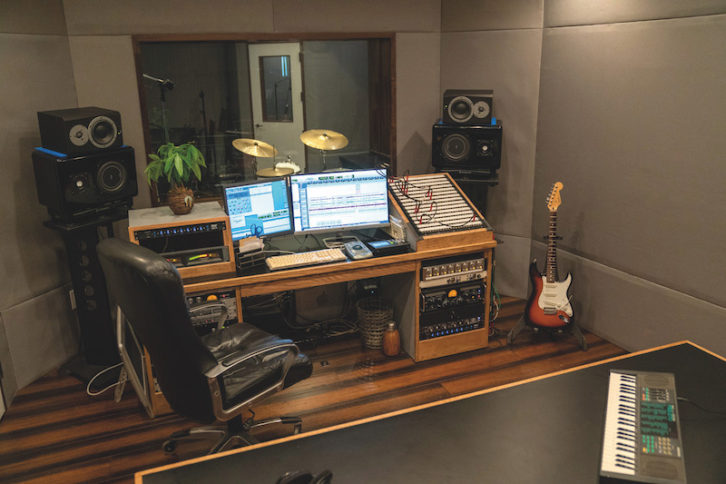
Carl Yanchar of the Yanchar Design and Consulting Group designed this personal facility for Emmet Sargeant. Beagle is a 900-square-foot music recording studio, constructed in a former barn in a small town just south of Santa Barbara, and it comprises a control room, main tracking room, piano isolation room, vocal booth and lounge. Equipment includes a Pro Tools HDX 12.7 rig, Winn Labs SM/8 studio monitors, Grace m905 monitor controller and m801 preamp, 7th Circle Audio, Neve and API channels, and an array of musical instruments, such as ’34 and ’70 Martin guitars, Boston grand piano, and a Yamaha Birch Custom Absolute drum kit.
Garibay Center Studio C, Hidden Hills, L.A. County
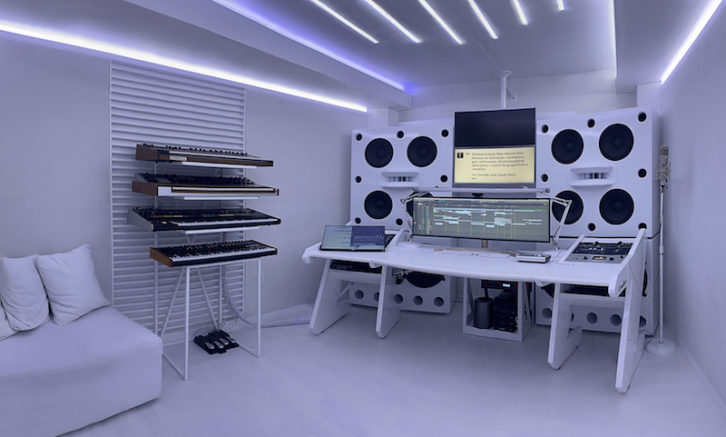
Studio C of the Garibay Center was designed by Pilchner Schoustal International and built by contractor Rob Rettberg as the personal production studio for Fernando Garibay. Behind the minimal appearance are acoustic design elements tailored to provide smooth and uniform listening response from the custom-designed Augspurger monitors designed by Dave Malekpour of Malekpour Design Partners. Great effort was made to achieve extremely high sound isolation, given the size and capability of the monitoring system. Additional equipment includes furniture by Studio Desk, vintage processing gear (Neve 1073, 1176, LA2A, etc.), a vintage AKG C12, and converters and plug-in DSP by UAD.
Take a look back:
• Class of 2019
• Class of 2019 Revisited
• Class of 2020
